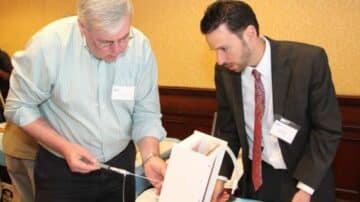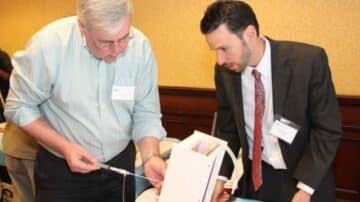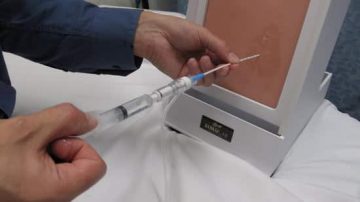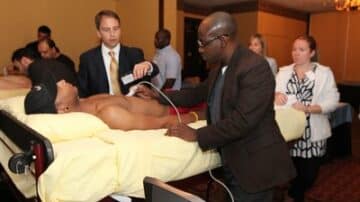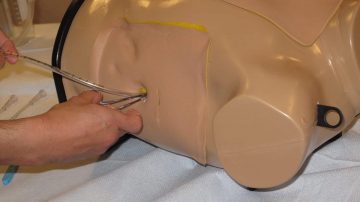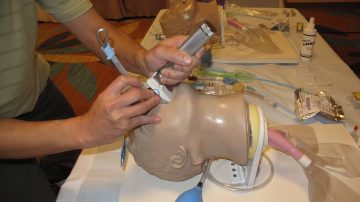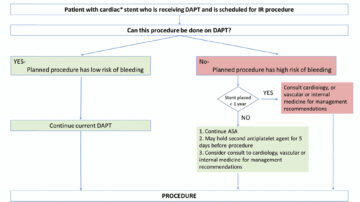If patients’ lymphatic systems aren’t working efficiently, they can experience water retention (edema) in various parts of their bodies. Edema commonly occurs when patients have an infection, kidney disease, venous insufficiency, heart failure, or cirrhosis of the liver. This abnormal…
Read MorePleural effusion is a common yet complex medical condition that requires tailored and multidisciplinary treatment. Despite being a common disease, its cause remains unknown in at least 20% of patients even after diagnostic workups. Fortunately, pleural fluid tests have improved…
Read MoreCritical emergency skills are an important tool in a healthcare provider’s arsenal. They must be able to safely perform emergency procedures to save lives when faced with a critical situation. However, once they finish their studies and training, many physicians…
Read MoreDelays to hospital inpatient admission in excess of five hours from arrival at an Emergency Department (ED) lead to a mortality rate of 8.71%. This increases by another 8% in cases where admission is delayed beyond six to eight hours. …
Read MoreConditions like congestive heart failure, pneumonia, cancer, and lupus can cause excess fluid to accumulate in the pleural space or area between the lungs and chest wall. To aspirate fluid from a pleural effusion, a medical procedure known as thoracentesis…
Read MoreMore Articles – Arterial line, Cardiovascular diseases, Central line, Chest Tube, Emergency Procedures, Endotracheal Intubation, Events, FAST Exam, Intraosseous line, King Tube, Laryngeal Mask Airway, Lumbar Puncture, Mechanical Ventilation, Medical General, medical procedures, Needle Decompression, Paracentesis, Procedural Sedation, RUSH Exam, Thoracentesis, Ultrasound-Guided Peripheral IV
Physicians, physician associates (PAs), and nurse practitioners (NPs) need to be adept in a range of essential medical emergency procedures that they must perform in an inpatient settings. These bedside procedures are accomplished readily, but only if you have the…
Read MoreA Continuing Medical Education (CME) Course is designed for doctors, nurses, nurse practitioners, physician associates and other healthcare professionals who want to learn more about certain topics in medicine. The primary goal of CME is to improve the quality of…
Read MoreThe emergency room (ER) is an essential area of any hospital because it often deals with life-and-death situations. How medical personnel respond significantly affects the prognosis of patients who are in need of urgent care. As a medical professional, experience…
Read MoreMore Articles – Cardiovascular diseases, Central line, Featured, medical procedures, Nephrology, Respiratory diseases, Thoracentesis
There are two myths that have persisted about thoracentesis and pleural fluid analysis that must be dispelled. The first myth is that a large volume thoracentesis should not remove more than 1,500 mL fluid due to the risk of re-expansion…
Read MoreMore Articles – Cardiovascular diseases, Emergency Procedures, medical procedures, Respiratory diseases, Thoracentesis
Thoracentesis is one of the most common bedside procedures performed in U.S. hospitals. There are about 173,000 thoracenteses performed each year in the U.S. A systematic review and meta-analysis in 2010 concluded that thoracentesis-related pneumothorax occurs 6% of the time…
Read MoreFor decades the mantra for procedural education in medicine has been “see one-do one-teach one”. Those of us who learned bedside procedures and point-of-care ultrasound by this model understand that this approach does not optimize safe and competent performance. At…
Read MoreChest tubes, or thoracostomy tubes, have been used since the fifth century BC when Hippocrates described the use of a hollow tin tube to drain fluid that was likely an empyema from his description.[i] Chest tubes started to be used…
Read MoreA recent article summarizes a cross-sectional survey aimed at determining the processes in place to assess the procedural competency of academic emergency medicine attendings.[i] The survey was sent to the 39 ACGME-accredited Emergency Medicine programs in the U.S. and had…
Read MoreMore Articles – Cardiovascular diseases, Central line, Endotracheal Intubation, Featured Procedure, Gastrointestinal diseases, Glidescope Intubation, King Tube, Laryngeal Mask Airway, Lumbar Puncture, Mechanical Ventilation, Medical General, medical procedures, Paracentesis, Respiratory diseases, Thoracentesis
Simulation-based procedural training has been shown to improve procedural competence, safety, operator confidence and most importantly patient safety for every bedside procedure studied. Now, a new systematic review and meta-analysis confirms that simulation-based training in airway management improves procedural competence…
Read MoreThis blog summarizes the 2019 Society of Interventional Radiology (SIR) for Periprocedural Management of Image-guided Procedures with regards to thrombocytopenia, coagulopathies, antiplatelets and anticoagulation. The SIR guidelines are summarized as follows: Anticoagulation with heparin, LMWH, fondaparinux, argatroban, warfarin, DOAC, clopidogrel, ticagrelor…
Read MoreCategories
- ACLS (1)
- Arterial line (33)
- Cardiovascular diseases (77)
- Central line (55)
- Chest Tube (39)
- Dermatology (4)
- Emergency Procedures (138)
- Endocrinology (6)
- Endotracheal Intubation (36)
- Events (24)
- FAST Exam (12)
- Featured (112)
- Featured Procedure (42)
- Gastrointestinal diseases (32)
- Ginecology (3)
- Glidescope Intubation (21)
- Hematology (33)
- Hospital Procedures (85)
- Infections (32)
- Intraosseous line (8)
- King Tube (27)
- Laryngeal Mask Airway (18)
- Lumbar Puncture (36)
- Mechanical Ventilation (34)
- Medical General (95)
- medical procedures (258)
- Needle Decompression (6)
- Nephrology (11)
- Neurological diseases (12)
- Oncology (4)
- Paracentesis (32)
- Pericardiocentesis (3)
- Procedural Sedation (19)
- Respiratory diseases (85)
- RUSH Exam (8)
- Thoracentesis (37)
- Traumatology (24)
- Travel (27)
- Ultrasound-Guided Peripheral IV (13)

